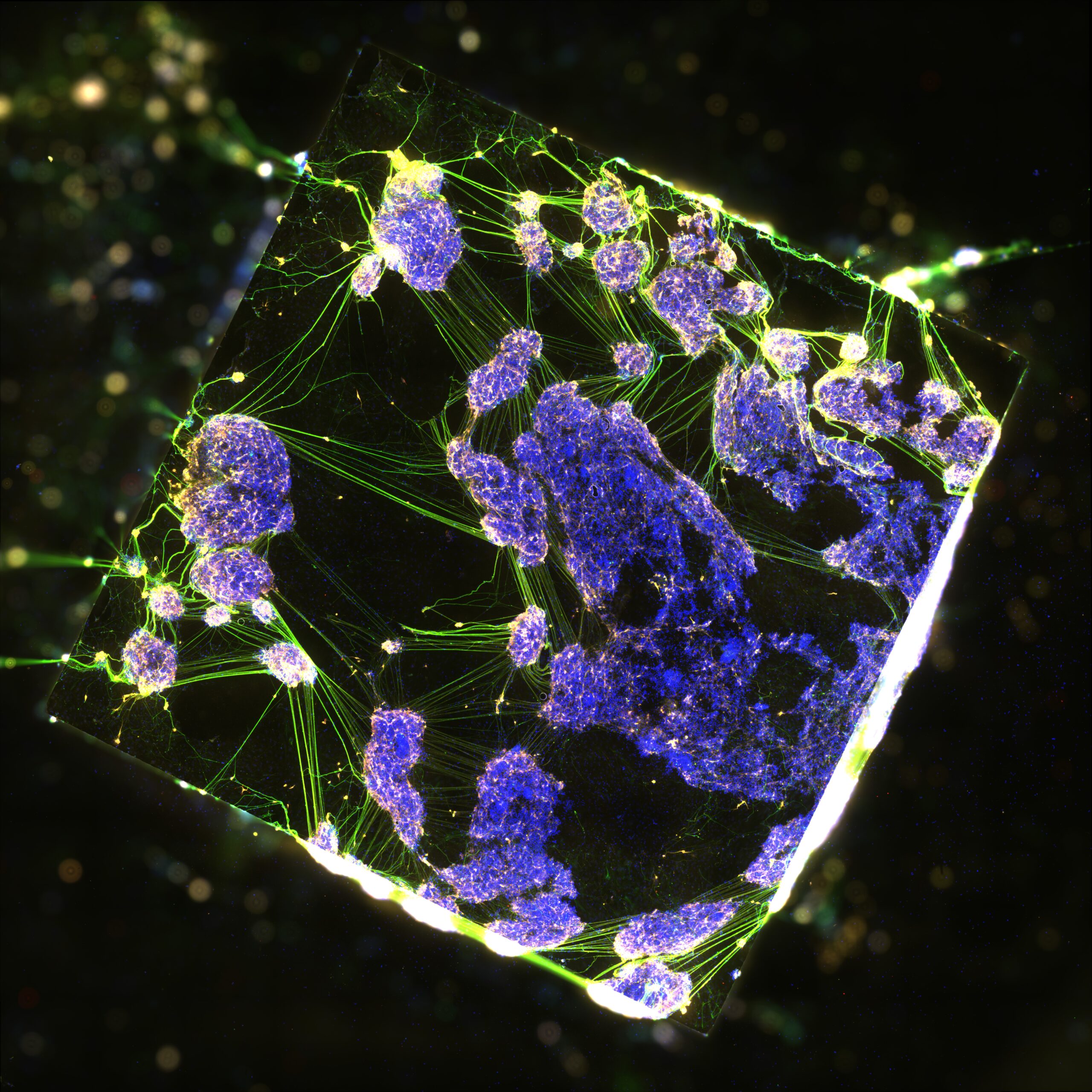Since the 1970’s the gold standard technique for measuring the activity of individual neurons has been patch clamp, which uses an electrode to record the activity of a single neuron.
However, this measurement destroys the cell, limiting the timeframe of experiments to minutes and can only measure the activity of one neuron at a time.
We are developing novel techniques harnessing the power of quantum technologies to provide new ways to measure brain activity from individual neurons, or whole networks of neurons.
We culture the neurons on lab-grown diamonds to visualise neuronal activity. Through imaging neuronal activity, rather than using electrodes as in patch clamp, the measurements can be taken over long periods of time.
In the future this will allow us to visualise activity across the whole brain and understand how individual neurons connect with each other to coordinate the intricate functions of the brain.
Image: Neurons cultured on a diamond, Ooi Lab, University of Wollongong
